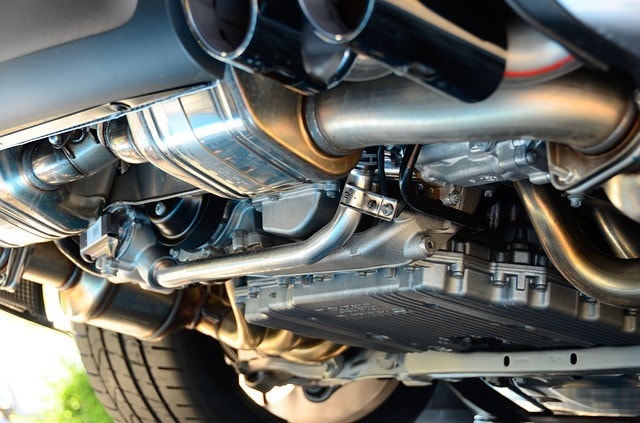Posted on: 2/18/2012
The last new car sold with a carburetor in North America rolled out of the dealership in 1990. Since then, all new vehicles have had fuel injectors. In very simple terms, a fuel injector is a valve that squirts fuel into your engine. Your engine control computer tells the fuel injector how much gas to deliver as well as the precise time it should be delivered. Of course this happens thousands of times a minute. Fuel injection is a much more precise way of delivering fuel than carburetors. That translates into better fuel economy and power. Virtually all fuel injectors for gas engines are known as port fuel injectors because they deliver the fuel to a port just outside the cylinder. Port fuel injectors operate at about 40 to 80 pounds per square inch of pressure. A few auto makers have introduced gas direct injection systems on some engines recently. These systems inject the gas directly into the cylinders under very high pressure – hundreds of times the pressure of port injection ... read more
Posted on: 2/12/2012

Whenever we talk about exhaust service, most people normally think about exhaust pipes and mufflers. Well, actually, exhaust service is a lot more comprehensive these days. For example, catalytic converters were mandated in 1976 and on-board emission control computers in 1990. Governmental emissions requirements have forced manufacturers to come up with much more sophisticated ways to comply with environmental regulations. Exhaust service has really become exhaust and emissions service. High-tech computer controlled emissions devices are now a big part of exhaust service. Because it is so sophisticated, your vehicle manufacturer recommends you have your emission system checked out by a qualified Littleton exhaust technician regularly to make sure everything is working right – usually every 6 months or 10,000 miles/16,000 kilometers. If your Check Engine light comes on, especially if it’s flashing, get your car looked at right away. Technicians at EAS Tire & Auto handl ... read more
Posted on: 1/28/2012
Here at AutoNetTV, we have viewers, like you, from all across the country who write to us with questions or feedback. One common question we’re asked is: What is a differential and what does it do? You may have been told your differential needs service, or seen it as an option up on the service menu. Differential service covers a lot of things, so let’s first talk about what a differential does. As you drive through a turn, your outside wheels and inside wheels turn at different speeds. Kind of like the cars going around a race track – the ones driving in the outside lanes have a greater distance to travel than the cars in the inside lanes. The differential is what allows the outside and inside drive wheels to rotate at slightly different speeds so that the tires don’t hop or skip while taking corners, or lose traction in dirt or snow. Differentials have gears in them that transfer the power from the drive trai ... read more
Posted on: 1/18/2012
The energy from exploding fuel is what powers your engine. But some of the vapors from the explosions escape into the lower part of the engine, called the crankcase. The crankcase is where your engine oil hangs out. These gases are about 70% unburned fuel. If the gases were allowed to stay in the crankcase, they would quickly contaminate the oil and turn it to sludge. Sludge is one of the biggest enemies of your engine, clogging it up, eventually leading to expensive failures. Also, the pressure build up would cause seals and gaskets to blow out. Therefore, these gases need to be vented out. Gasoline engines used to simply have a hose that let the poisonous fumes vent out into the air. In 1963, the federal government required gas engines to have a special one-way valve installed to help reduce dangerous emissions. Diesel engines are not required to have these valves. The positive crankcase ventilation, or PCV, valve routes crankcase gases through a hose and back into the air intake sys ... read more
Posted on: 1/5/2012
A lot of our viewers have asked whether or not they should use their severe service maintenance schedule, which is listed in their car owners’ manual. It can be confusing. Let’s clear the air on this subject. Cricket Killingsworth is from QMI/Heartland, a manufacturer of automotive products and fluids. She’s been in the automotive business for 20 years and is a speaker, a trainer, and a writer. Cricket says there’s so much confusion on this topic because, “Most owners’ manuals actually have two maintenance schedules. Sometimes these are called ‘regular service’ and ‘severe service’. Sometimes they’re simply called Schedule 1 and Schedule 2. A severe service schedule recommends that things like an oil change, air filter replacement, and transmission service be done more often: either in fewer miles or in less time. Manufacturers create these specific schedules for each vehicle they make. So there isn’t one generic s ... read more